‘How many horses do you have?’ the young horse rider asked us from the top of his horse.
‘A few’, we answered. He challenged us to a race to the yurt by the lake. ‘The winner gets to drive your motorbike’, he shouted while breaking into an effortless gallop.
He had already dismounted by the time we arrived at his side.
‘Good bike and good tyres. I wasn’t expecting you to be able to follow.’
This is how we got to know cheerful Jamel. He is a bike enthusiast and the proud owner of a beautiful horse AND a forty-seven-year-old Ural motorcycle, a classic Russian motorbike. He wanted to know everything about our ‘Poderosita’, including, if we didn’t want to sell it to him. Jokes flew thick and fast about exchanging it for his horse, and how we would win all the bets against motor-bikers who thought they could drive faster than a horse over the grass steppe.
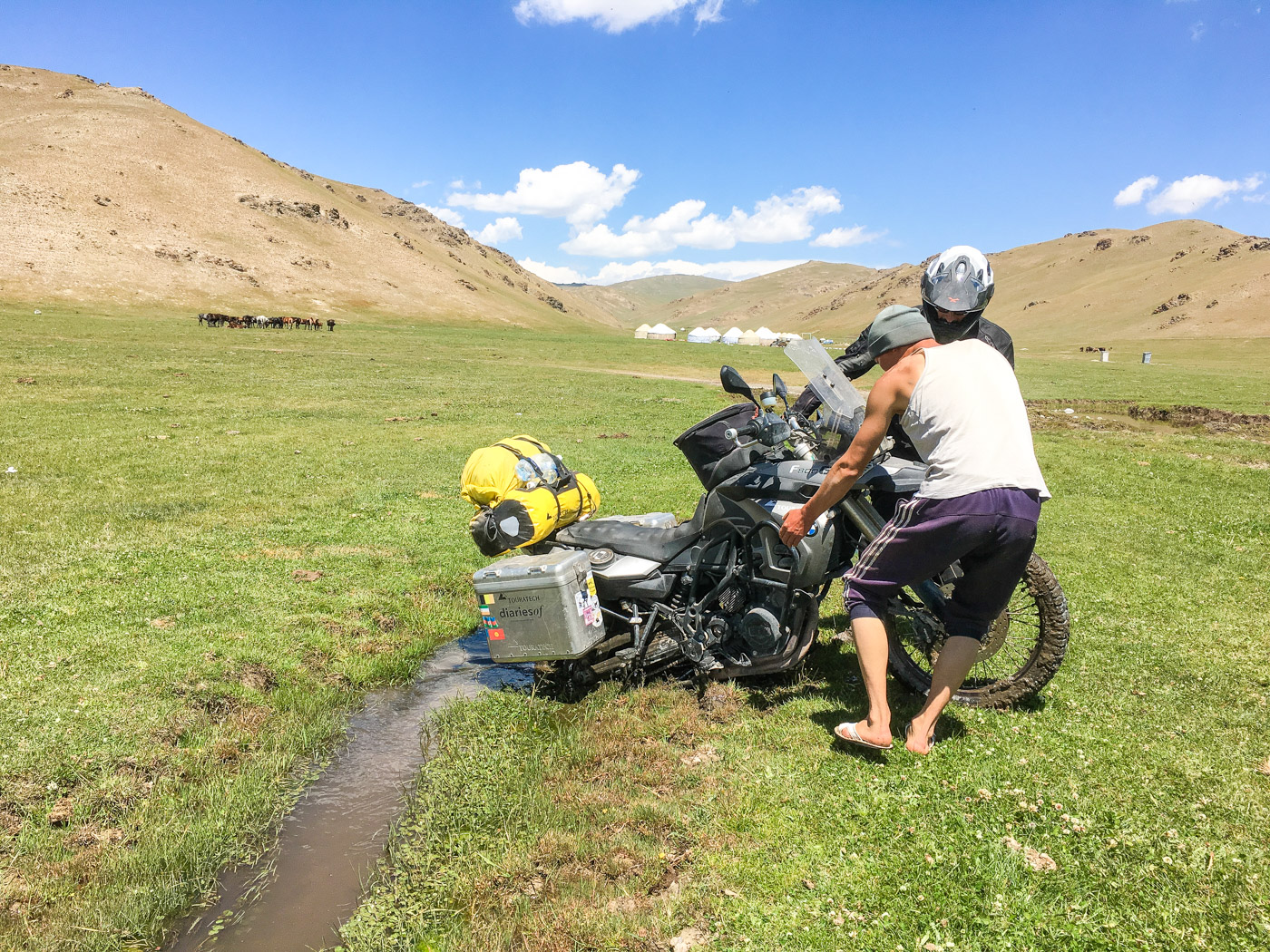
Jamel is an engineer who doubles as a herdsman and who also runs a small group of yurts with his family. He explained that he actually makes more money in the summer, when he comes to the jailoo and provides accommodation for tourists, who want to stay a couple of days by Song-Kul Lake, than he does over the rest of the year in the city, working as an engineer. He isn’t the only well-educated person that we meet who makes a living from summer nomadism.
We had entered Kyrgyzstan through Osh, the second biggest city in Kyrgyzstan and, according to feedback from other motor-bikers, the best bet to find good off-road tyres in the region. Why here? Because Kyrgyzstan is more or less mid-way between Europe and Vladivostok, a popular route for long-time or adventure travellers, the modern ‘caravaneers’ on the Silk Road. After having driven more than 20,000 kilometres with our Anakee tyres, we needed a new pair. We were happy to have brand-new Heidenau off-road tyres, during the following weeks, as we drove over the Kyrgyz dirt roads with the ‘appropriate shoes’.
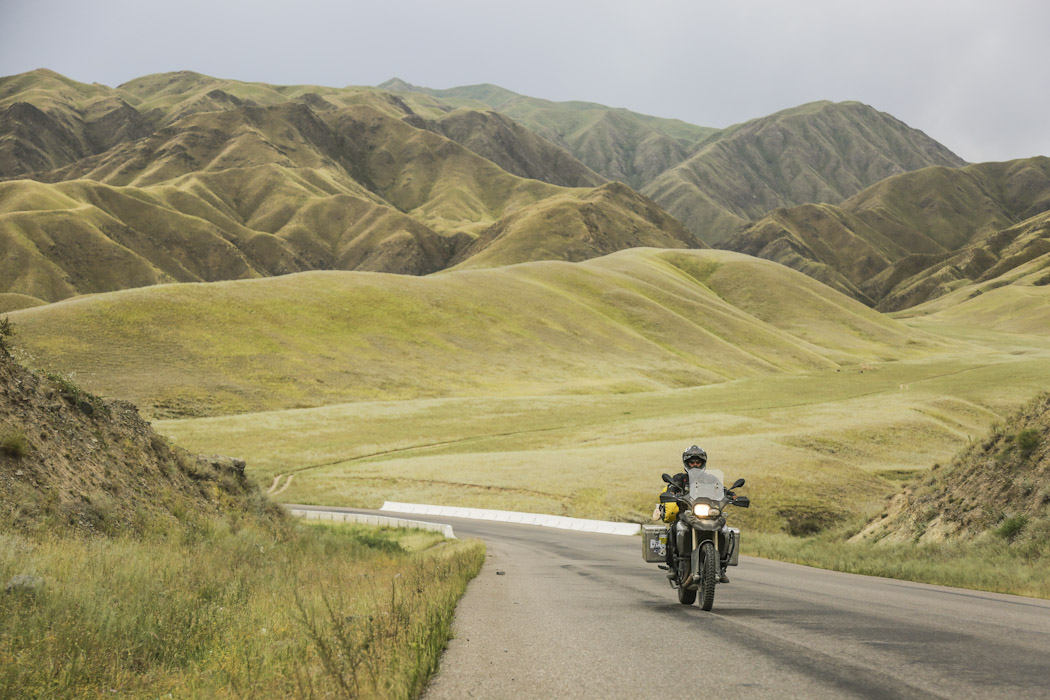
We headed to the well-known Alai Valley, where we had our first contact with yurts and caravans spread out over the hills. Some of them were very close to the main road, and were where the nomads sold their dairy products or meat. Because their yurts are next to the road, and the people practically live outdoors, a kind of voyeurism occurs as we spot the most improbable scenes of everyday life: women cooking over an open fire; making korut or milking cows; men killing animals, and laying their skins out to dry, or even people going to the toilet. As for children, they always waved us good-bye.
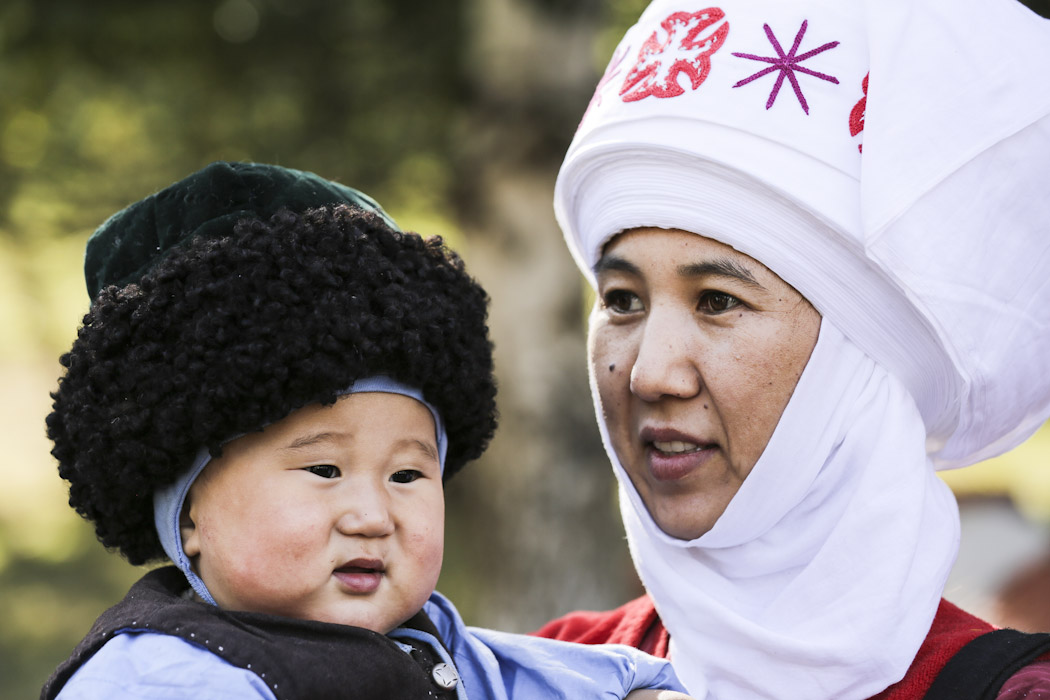
Amidst our frequent photo-stops in the Alai Valley, we halted for a particularly picturesque scene, a blue and red caravan against a lush, green, and very vast plain. Inside the caravan was a family. What the scene didn’t show was that this nomadic family only stays in their jailoo during summer, and the rest of the time is spent between their houses in Sary Mogul and in Osh. They come here, where there is pasture for their fifty horses and many more cattle. Aiperi, the charming twenty-four-year-old daughter of the couple spoke perfect English with us and is actually a lawyer. Like Jamel, she makes more money with livestock than in her profession. So, even though she has a university degree, she is leading a simple but rewarding life in the countryside.
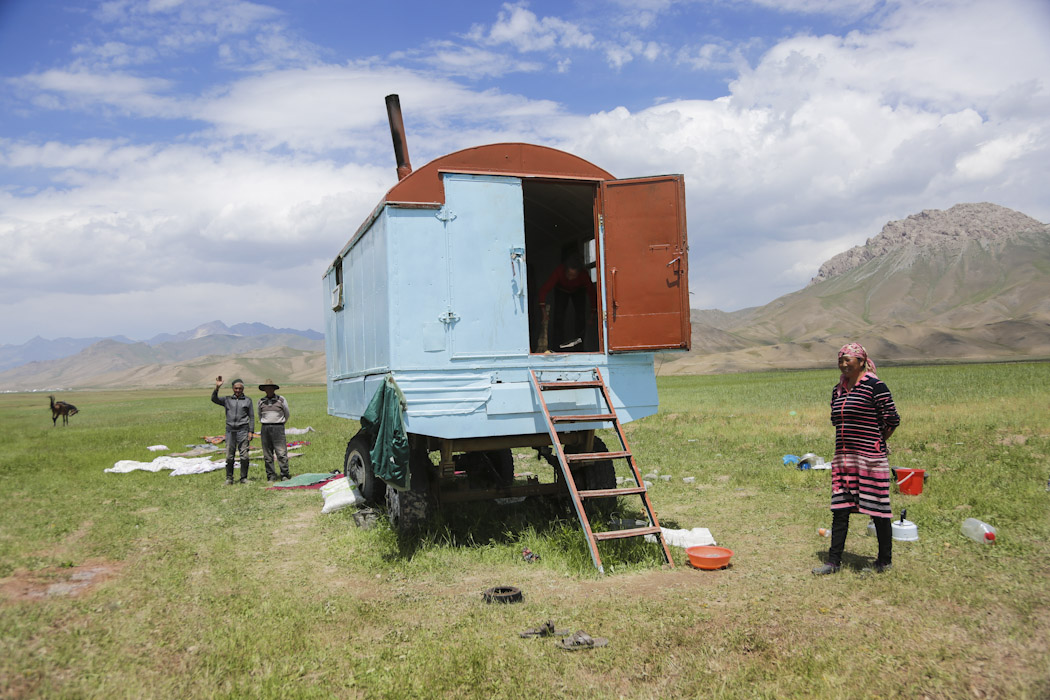
Despite our new tyres, we ended up having our first and only flat tyre, a few kilometres after having changed them. The reason? The bad road, most probably. And perhaps a little bit too much pressure in them. Notwithstanding the inconvenience, we were lucky this happened, two kilometres away from a village, where we could easily repair it and continue our journey. Another fifty kilometres away and we would have been in a remote environment, away from people and villages. We would have been in a bit of a trouble. But we weren’t!
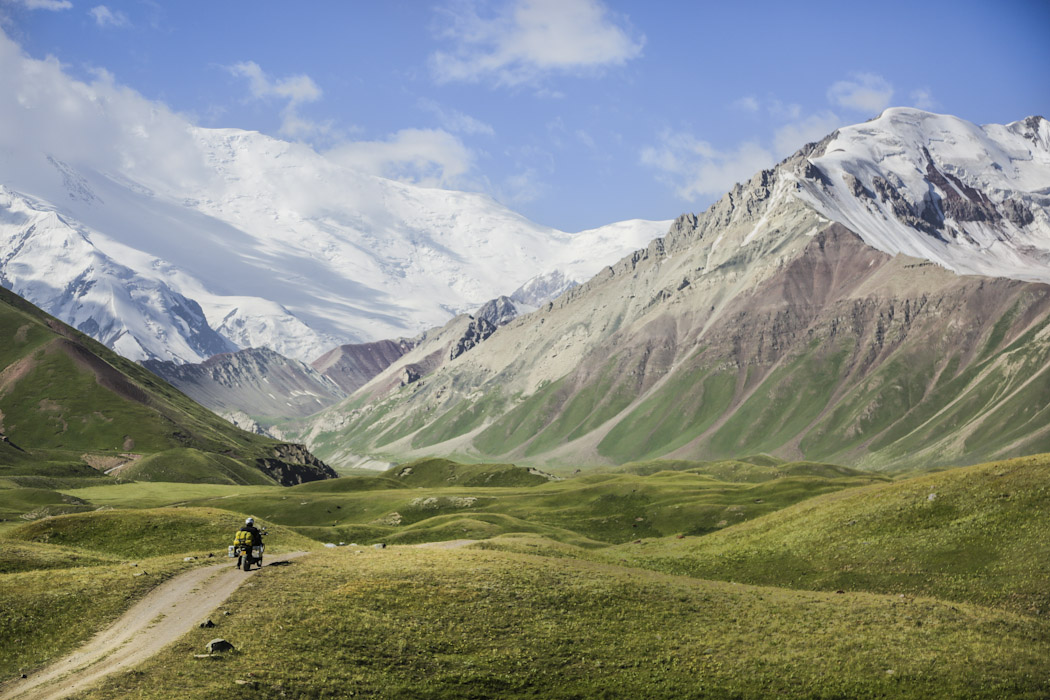
The road wound through the huge valley, surrounded by hills, until we made it into the mountains. First we climbed them and afterwards we descended them – deep into the valleys, always with an eye on the snowy-covered peaks approaching us. The weather also played tricks on us, changing very quickly from clear skies to heavy, dark clouds that threatened us with rain. It was a miracle that we managed to avoid rain for so many days. But then, one day, over-confident after our previous luck, we got caught in a looming thunderstorm. We didn’t even try to avoid it, we just dressed in the warmest clothes we could, put on our rain gear and hoped that the tyres would not let us down. The tyres were just fine. However, we stopped less than thirty minutes after the rain hit us; not because we were soaked (which we weren’t), nor because we were cold (which we were), but because in the meadow ahead of us, we saw a tent that we thought we recognised. Indeed, the tent belonged to our Basque friends, who were cycling across Kyrgyzstan with their dog. We had first met them in Azerbaijan, and then we followed different routes, until we met again, by coincidence after we had crossed the Ala-Bel Pass, the only place where we had rain. We camped together, and being with friends was what we needed to bring some warmth to our coolest night in Kyrgyzstan.
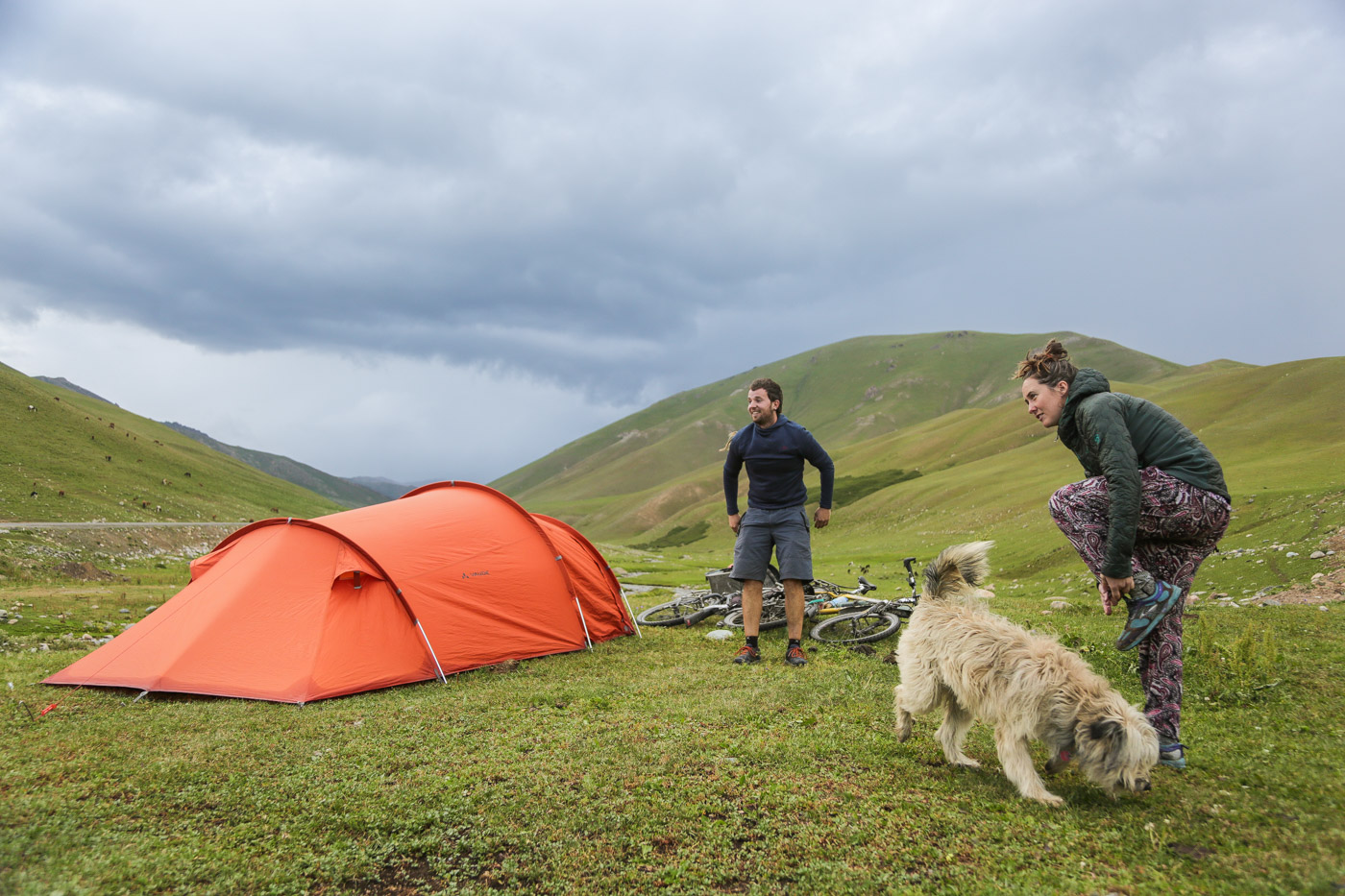
The next morning, after cooking breakfast with Maddy and Iñigo, we split up once more, knowing that we wouldn’t meet again, because we were going to opposite directions, but hoping to meet the three of them again somewhere, sometime soon. We were finally on our way to one of the highlights of our motorbike trip: Song-Kul Lake.
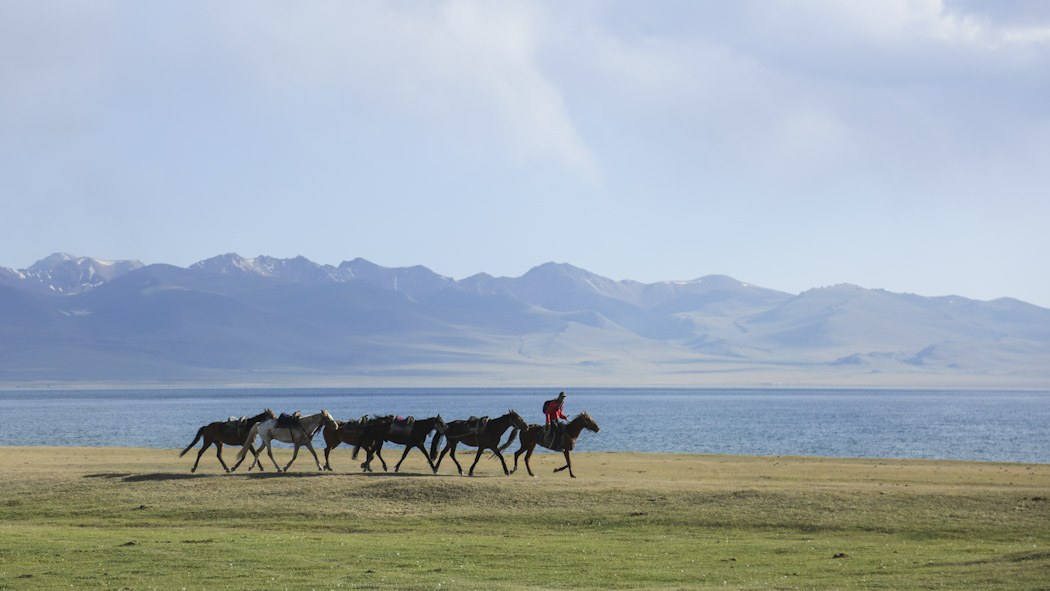
We were 100 kilometres away from the lake, but somehow it took us an entire afternoon to reach it! Most of the ride consisted of off road and as the lake is situated at more than 3,000 metres of altitude, it was an uphill off-road. The last 15 kilometres were really difficult, with a very steep gravel off road ‘serpentining’ up the mountain that would bring us to the northern shore of the lake. To complicate things, Jorge was feeling sick, with headache and fever probably due to the altitude. When we arrived at the top, we were both amazed by the view of the immense lake on a grass-steppe plain and exhausted. We took the first yurt in a family camp and went straight to bed. It was our first night in a yurt (too cold to camp) and we felt cosy under at least a dozen blankets. Cuddled and warm we could hear at dusk another thunderstorm approaching.
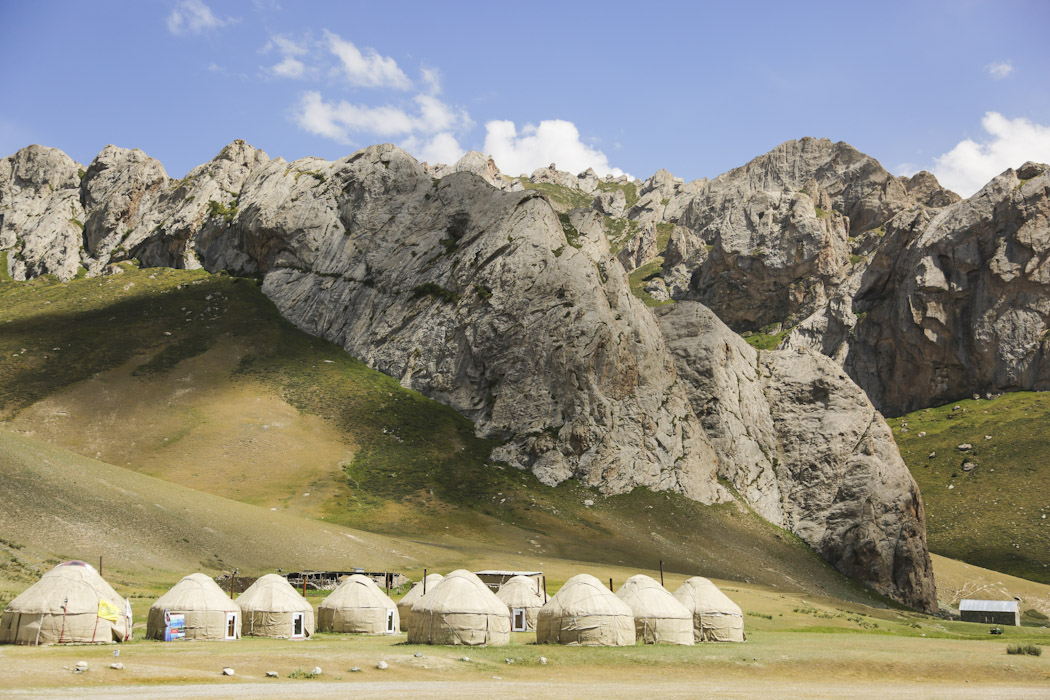
We woke up with the first rays of sunlight entering through the yurt’s top and with the earth trembling under us! We jumped up and precipitated to the door from where we saw a herd of horses galloping in front of our yurt on their way to the water. The sky was clear again, without a single cloud. This would be a constant on this lake. Blue skies in the morning, thunderstorms at the end of the day. It is surprisingly silent at Song-Kol. The silence is only interrupted by horses, or bands of sheep and cows, in groups so numerous that you can’t even count them. The shepherd in Kyrgyzstan comes on a horse.
The women of our jailoo started appearing from inside the yurts. They were carrying buckets to collect milk from their cows. With it they prepared our and their breakfast. We walked to the creek for some cool and quick face-washing and to the lonely loo, in the middle of the prairie, only to be interrupted in our affair by a cow that needed the loo’s corner to scratch its back.
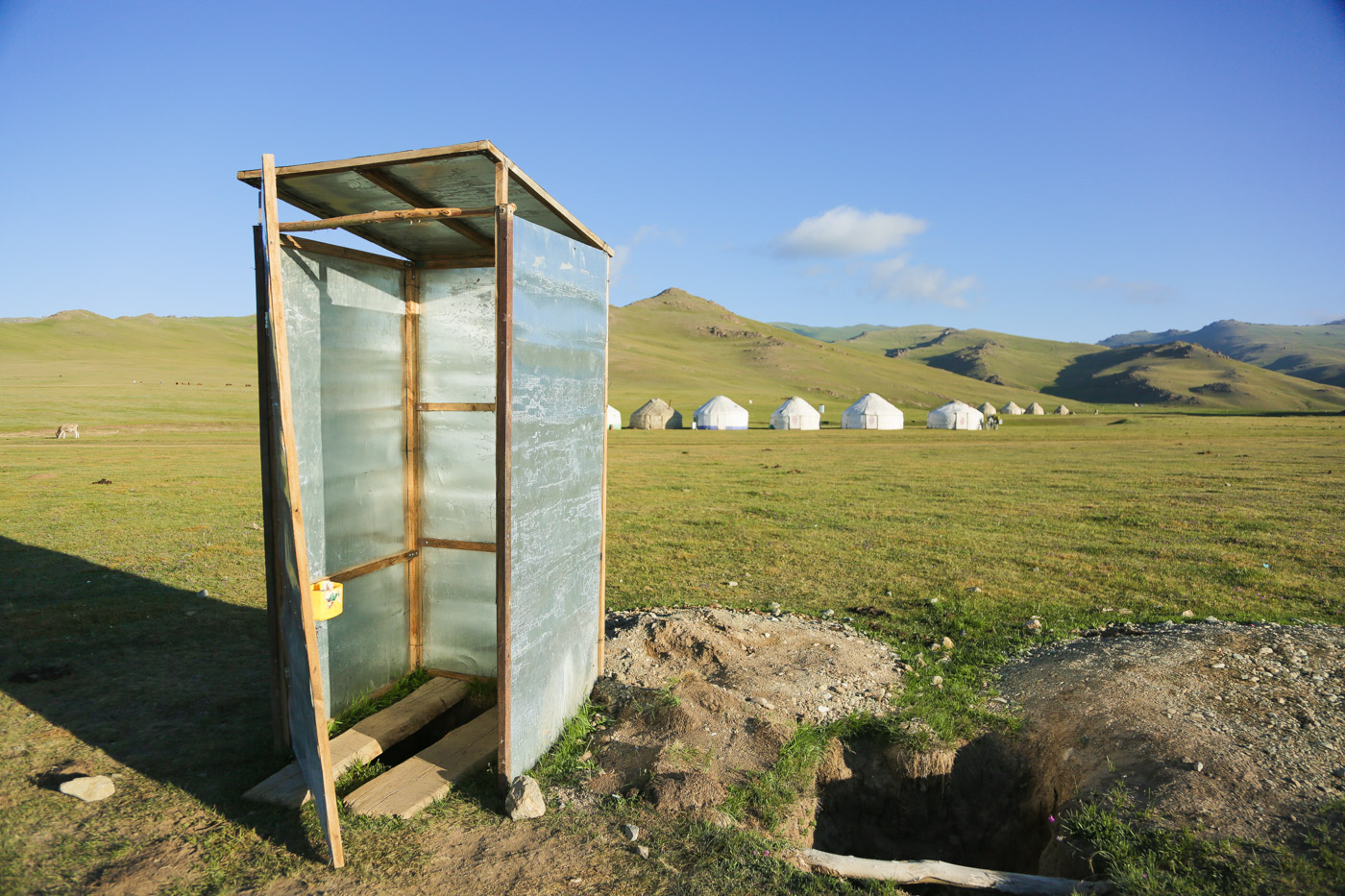
We spent the day riding around the lake, stopping ever so often to enjoy the place and the moment. There is one sole 60-kilometres dirt road around Song-Kol, which many choose to walk, while others ride it on horses. All around, the views are ever so spectacular. We did it with the motorbike, as slow as if our ‘horse’ had no engine, not to pierce the stillness, for the pleasure of the landscape, to stop and sway on the wooden swings and watch the tranquil jailoo life in its different shapes: to salute the horses, to learn how to grill the goat’s head, to fill buckets of water out of a spring.
Then, we continued for more of the same view, same life, never tiring, so simple, so near the grass roots of existence…


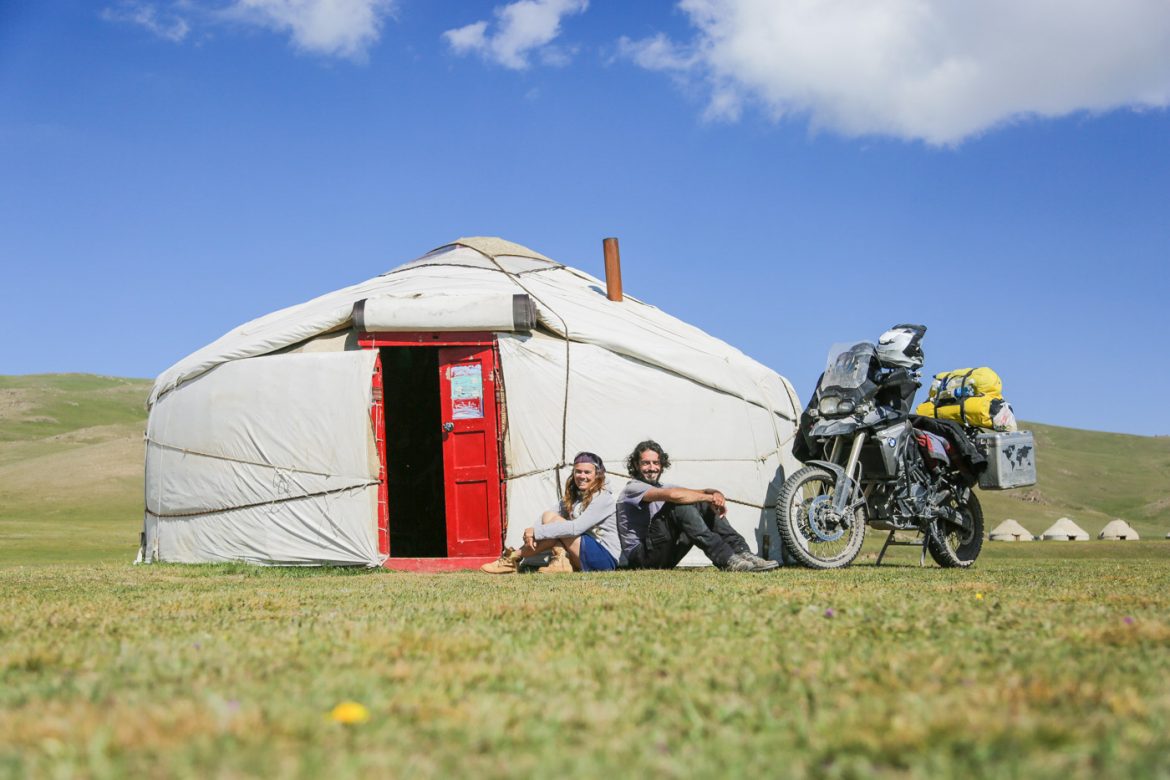
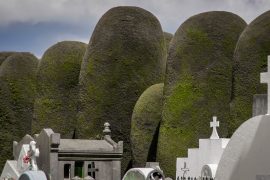
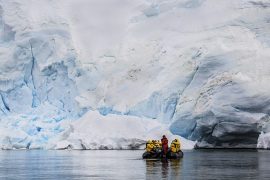

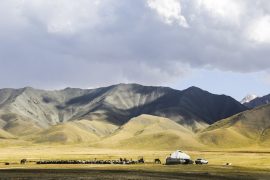
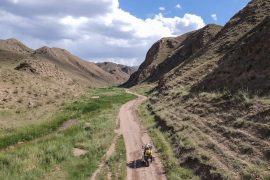
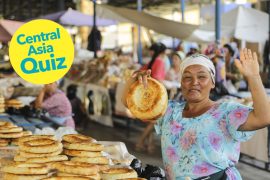
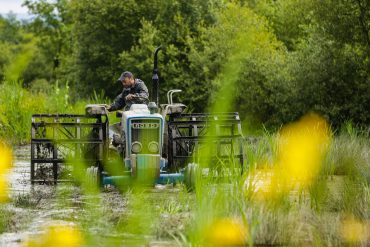

Beautiful pictures!!
Can you tell which month did you do this ride ?
Hi Nabeel, I think we were in Kyrgyzstan in August and September